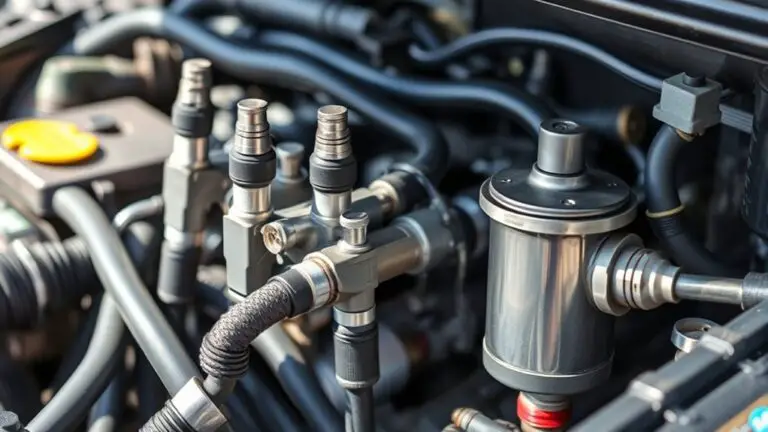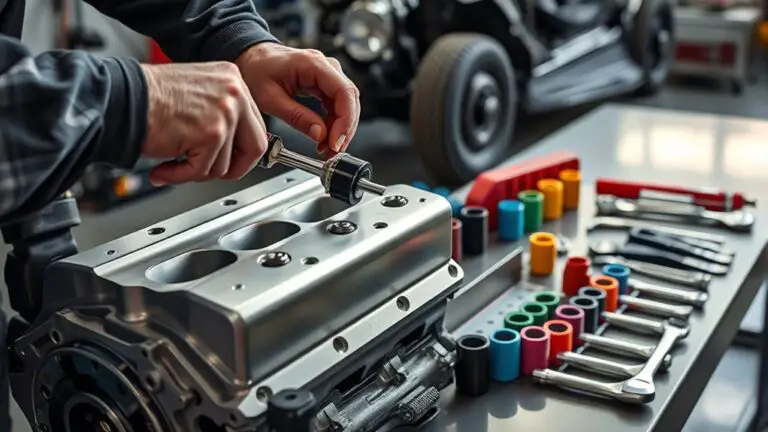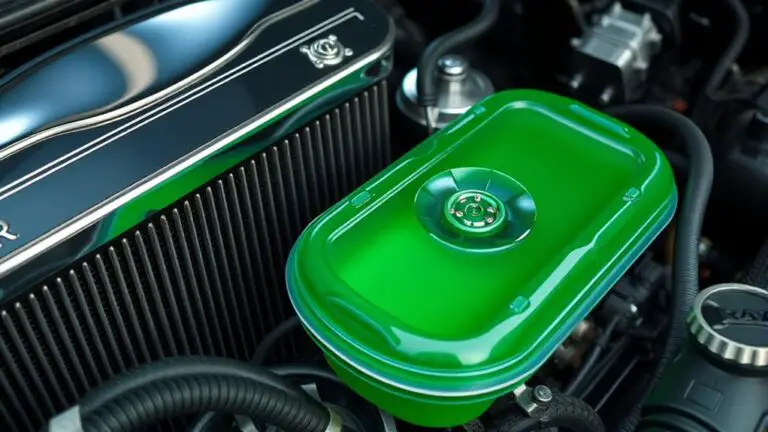Why HV Battery Cell Imbalance Appear After Charging and How to Fix Them
Cell imbalance after charging happens because each HV battery cell has different state of charge, aging, and resistance, plus charger behavior and BMS calibration can unevenly distribute energy. Some cells hit voltage limits sooner, others lag, and temperature or SOC mismatches worsen drift. Fixes include combining passive and active balancing, calibrating sensors, and addressing aging shunts. Keep an eye on cell voltages, currents, and temps, and consider tailored charging profiles; more details await if you continue.
Understanding What Causes Cell Imbalance After Charging
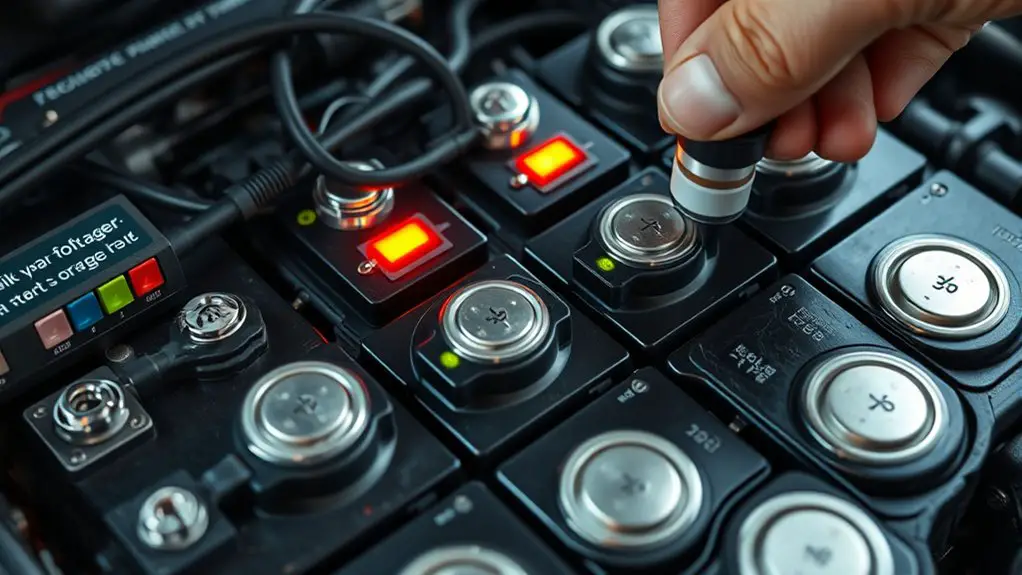
Cell imbalance after charging arises when individual cells in a high-voltage (HV) battery pack end up at slightly different state-of-charge or open-circuit voltage levels, causing some cells to be more charged than others despite a completed charging cycle. You’re looking at two primary pressures: cell chemistry variations and manufacturing defects. Variations in cell chemistry alter internal resistance, diffusion rates, and equilibrium voltages, so even identical cells respond differently to the same charging profile. Manufacturing defects introduce structural or material flaws that shift individual cell behavior, producing offset OCVs and uneven polarization during charging. External factors—temperature gradients, pack topology, and sensor calibration—amplify these intrinsic differences, masking the true state of balance. To diagnose, you compare individual cell responses to a reference, monitor voltage recovery after rest, and check for outliers during high-rate stages. Addressing imbalances involves balancing strategies, selecting uniform cell chemistry, and stringent quality controls to minimize defects and preserve overall pack harmony.
The Role of Cell Aging and Capacity Differences
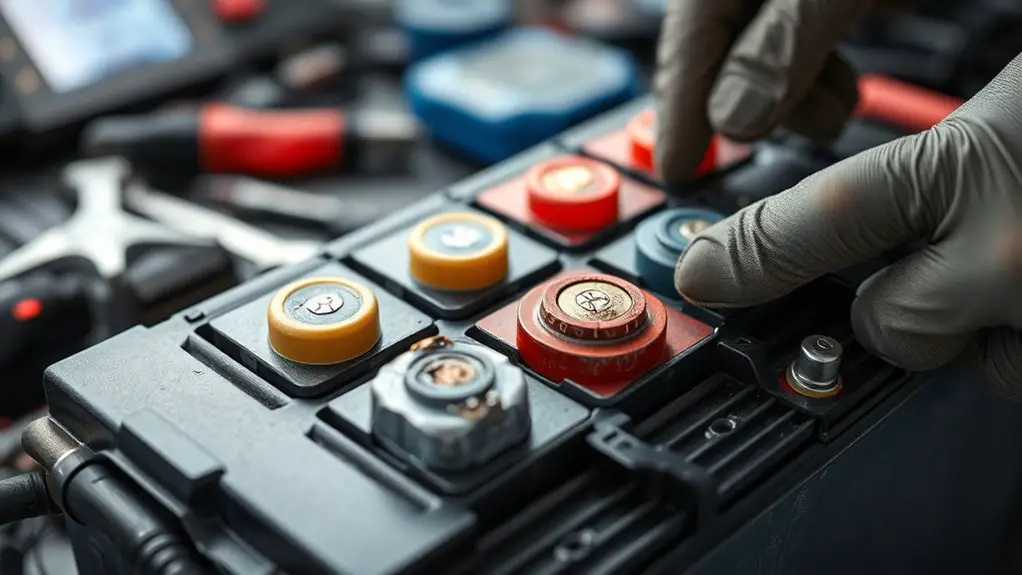
Aging and capacity differences among HV battery cells introduce dynamic shifts in how each cell responds to charging and discharging, influencing overall pack balance even when initial impedance and chemistry were uniform. You’ll observe that cell aging alters internal resistance and partial state-of-health, causing some cells to reach voltage limits sooner during charge and others to fall behind during discharge. Capacity differences emerge from uneven aging rates, manufacturing tolerances, and prior duty cycles, creating a spread in remaining energy as the pack operates. Over time, cell degradation concentrates energy in certain cells, while others exhibit reduced energy availability, driving imbalance despite uniform pack design. This divergence manifests as localized overcurrent during charging or underutilization during discharging, stressing balancing paths. Capacity fade accelerates when cells operate far from their ideal SOC range or under high temperatures. Monitoring with precise SOC and SOH metrics helps anticipate imbalance trends and informs targeted balancing strategies.
How Charger Behavior and BMS Calibration Affect Imbalance

Charger behavior and BMS calibration directly shape how imbalance unfolds by determining how energy is steered among cells during charge and how SOC estimates align with real conditions; when chargers push current patterns that differ from a cell’s needs or the BMS misreads cell states, some cells reach voltage limits or exit charge earlier, while others lag. You’ll see imbalance arise as a mismatch between delivered current and each cell’s availability. Charger characteristics like current slope, termination thresholds, and pulse behavior set the stress profile, while bms settings decide how aggressively the system pursues balance actions and when balancing is triggered. Precise calibration guarantees SOC readings reflect actual cell states, reducing over- or under-charging of individual cells. Avoid reliance on generic heuristics; tailor the charger profile and BMS thresholds to your pack’s chemistry and aging. Proper alignment minimizes unnecessary heat, extends cell life, and preserves overall pack performance without compromising safety or control.
Temperature, SOC Mismatch, and Their Impact on Balance
Temperature and SOC mismatch can destabilize balance by causing uneven cell behavior during charging and discharging. You’ll observe how temperature effects and soc variations translate into divergent cell trajectories, stressing pack-wide balance algorithms and shortening useful life. In practice, small gradients produce outsized impacts on cell voltage and impedance, biasing one side of the pack. You should track both thermal and state-of-charge fields to anticipate SEI formation, diffusion limits, and current sharing errors. The goal is to minimize drift, not chase perfection.
| Temp delta | SOC delta | Resulting imbalance |
|---|---|---|
| Low | High | Accelerated aging in cooler cells |
| Moderate | Moderate | Stable but sensitive to perturbations |
| High | Low | Risk of runaway imbalance |
| Actionable insight | measurement focus | consequence |
| Monitor gradients | temp, voltage, impedance | Proactive mitigation preferred |
Practical Fixes: From Simple Balancing to Advanced Remedies
Balancing strategies evolve from simple, per-cell checks to coordinated, pack-wide controls that actively manage differences in voltage, impedance, and state of charge. In practical terms, you begin with passive balancing: allowing higher cells to offload energy through bleed resistors until voltages converge. This is low-cost, but slow and limited by energy dissipation and temperature. If you require tighter tolerance or faster response, you implement active balancing: redistributing energy from high cells to low ones using converters, which improves pack utilization and runtime without excessive heat. You’ll monitor cell voltage, current, and temperature with a BMS that timestamps events and flags drift beyond thresholds. Calibration matters: verify sensor accuracy, address aging shunts, and correct for SOC estimation errors. For mixed chemistries or high C-rate demands, combine strategies—start with passive airing, switch to active in critical segments, and tune cut-in thresholds. In all cases, document procedures and safety interlocks to preserve reliability and freedom in operation.
Frequently Asked Questions
How Often Does Cell Imbalance Recur After Charging Cycles?
You’ll typically see minor recurrence after every few charging cycles, but major imbalances are uncommon with proper cell balancing. As you cycle, watch for gradual shifts in individual cell voltages. If you rely on active balancing, you’ll notice less drift over time. Regular monitoring during charging cycles helps you intervene early. Maintain balanced modules, guarantee consistent cooling, and verify pack integrity so cell balancing remains effective and you preserve performance and safety.
Can a New Battery Still Develop Imbalance Quickly?
A new battery can still develop imbalance quickly. You can see early signs if your charging habits are inconsistent or you push the pack beyond recommended voltage. Battery aging accelerates under high C-rate charging, temperature swings, or partial-state-of-charge cycling. Maintain stable charging, avoid deep discharges, and monitor cell voltages. With disciplined charging habits, you reduce risk; without it, even new cells may drift as aging processes begin and cell-to-cell resistance diverges.
Do Different Chemistry Types Balance at Different Rates?
Satire: “Of course, every chemistry balances like clockwork—sure.” You’ll see lithium chemistry tend to seek tighter voltages faster, while nickel chemistry drifts more in practice, so yes, they balance at different rates. You’re evaluating pack behavior, so you track cell impedance, SOC, and temperature profiles. In technical terms, lithim cells generally exhibit quicker balancing dynamics than nickel chemistry, especially under identical BMS duty cycles. You’ll need tailored balancing algorithms for each chemistry.
Does BMS Firmware Version Influence Imbalance Severity?
Yes, your BMS firmware version can influence imbalance severity. If you install stable BMS updates, firmware stability improves cell monitoring, balancing decisions, and fault handling, reducing uneven charging. Conversely, unstable updates may introduce timing or calibration errors that worsen imbalance. You should track release notes, back up configurations, and verify the firmware is current. Ascertain updates are performed under proper conditions; you’ll gain predictable behavior and safer, more balanced operation.
Are External Chargers Capable of Causing Imbalance During Top-Ups?
When you slap in an external charger, you can trigger uneven current that nudges cells out of balance; yes, external charger effects can cause transient imbalances if voltage taps aren’t matched. You’d better rely on proper balancing techniques during top-ups, like staged CC/CV with cell voltage monitoring and active balancing. Guarantee charger voltage, current, and cell thermals stay within spec, and use BMS-based equalization to minimize long-term divergence. Freedom prefers measured, precise charging.


